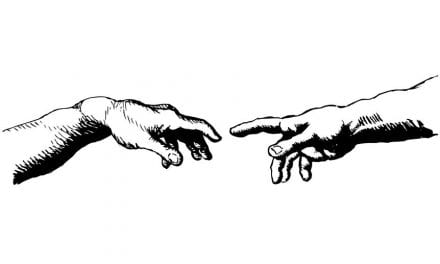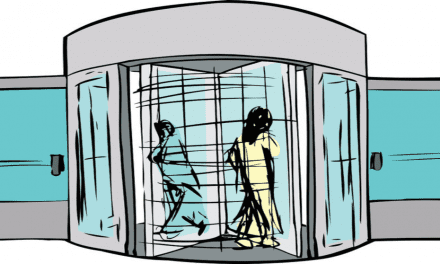By Jack Cumming
When did you last listen to someone? I mean really listen without thinking of what you might want to say next. Listening is not a skill that is taught in most schools. Schools for teachers emphasize message delivery with curriculum, lesson plans, class exercises, and grading as components. Less emphasized is learning, and that requires listening.
That may change – the “flipped classroom” and Susan Bloom’s book, Ungrading, are promising – but most of today’s senior living workforce are products of past public school practices. I thought of this the other day when I participated in a Zoom discussion class featuring a physician and an audience of mostly Certified Nursing Assistants (CNAs).
Continuing Education
The topic was “Delirium and Sepsis” and the instructor was a physician. The takeaway is that these conditions are often very treatable if discovered early. The consequence of delay can be fatal. Recognizing initial onset is crucial, and that recognition stems from observable changes in behavior. The presenting physician was clearly a good listener. She would mirror back a statement before giving her own assessment. Physicians are not generally present daily or even regularly in a nursing facility, so they are dependent on staff to tell them what is happening with the patient.
The physician cited the case of a healthy 74-year-old woman who came into nursing care after a hip replacement. All went well until she began to have bowel irregularity, to which physicians responded with medications. The woman’s appetite dropped. Her engagement with others faltered. She complained of abdominal pain. Eventually, 911 had to be called and she “coded” before reaching the hospital. In the hospital, her condition went downhill and she died. Sepsis was the cause of death. As a layperson listening to the case, it was evident that many warning signs along the way were simply missed . . . tragically.
What struck me also was how reluctant the roughly 20 frontline workers in the Zoom class were to speak up. The physician then noted that she can only act on the information that she receives either on the phone or more often from the chart. Specifically, she said, “. . . that it’s really important to document in the chart what changes have happened so that you’re communicating from member to member, from nurse to nurse, and from nurse to physician . . . Nursing homes are very good in general at complying with rules. The issue is there aren’t any very specific rules when it comes to delirium and sepsis.”
Viewed as a System
That seemed like a systemic dilemma. The CNAs and nurses who are in a direct relationship with the patients aren’t as articulate as are the physicians who depend on their observations. As I watched the Zoom class proceed, it was evident that some of the low-level participants have a short attention span and weren’t concentrating on the information being shared. Many may have been there to satisfy continuing education requirements.
The physician asked the participants if they had training or protocols for delirium and sepsis where they work. The answers were less than optimal. It was hard to participate as an outsider and not to consider how the system might be restructured to give a more positive result. The processes of systems analysis evolved rapidly after Operations Research emerged during World War II and accelerated with the widespread introduction of computers. Yet, these fundamental patient-care challenges of communication and response seem to be mired in an earlier age.
CNAs are central to medical responsiveness for the very old. A quick summary of the tasks of CNAs makes their critical role clear. These tasks include the following :
- Grooming and bathing patients with low mobility
- Preparing each patient room with necessary items like blankets, pillows, medical equipment, and bathroom needs
- Helping patients eat and take medications
- Making sure they have regular meals and proper medication dosages
- Monitoring vitals and patient behavior and reporting them to the resident care and medical staff
- Assisting patients with mobility needs, transferring them from wheelchair to bed
- Turning or adjusting patients in bed to prevent bedsores or other discomforts
- Exercising patients by helping them walk.
That’s daunting and the list doesn’t even include what we know to be some of the most demeaning tasks of CNAs, tasks that in at least one culture were traditionally the work of “untouchables.”
The Business Challenge
One website reports that “certified nursing assistants in the United States make an average base salary of $13.99 per hour or $31,597 annually. CNAs also make an average of $4,500 in additional overtime compensation each year, bringing the average salary up to $36,097 annually.” Running the numbers suggests that even CNAs who are paid that $13.99 per hour for 52 weeks a year (implying paid vacation and sick time) have to work close to 44 hours per week to receive the reported base compensation of $31,597.
What’s surprising is that anyone is willing to serve as CNAs at all. These servants of the aging and aged are truly heroes, who came to work even during the worst of the pandemic at risk to themselves and hoping that they didn’t infect their families. Moreover, their low pay limits incentives for their employers to develop technological or organizational innovations that might make the work more efficient. These low-paid workers ought not to be expected to give physicians the medical information they need to reach proper conclusions.
Today’s medicine is often hierarchical with specialists at the top, followed by primary care doctors, registered nurses, licensed vocational nurses, certified nursing assistants, and I suppose at rock bottom are the cleaning staff who contribute to the sterility of the environment. The physician can only react to the information she or he has. It’s unlikely that the need for communications to move through this hierarchy is the best way to ensure that critical flow of information. That was my primary takeaway from my “drop-in” experience of CNA education in action.
Relationship Medicine
There is a better model that serves but a minuscule portion of those who might otherwise require nursing home confinement. The PACE approach (Program of All-Inclusive Care for the Elderly) brings physicians, geriatricians, and support staff into recurring relationships with those in their care. The impact of that is to lower costs and improve results. PACE is now limited by law and practice, but it’s a model that deserves study for medicine more generally. Relationship Medicine can give us better medicine than today’s Reactive Medicine.
Medicine has reformed itself before. Anesthetics were seldom used to treat Civil War injuries. It was not that long ago that Johns Hopkins was the first medical school to make a college degree a prerequisite for admission. Johns Hopkins, especially under William Osler, was the first to educate women physicians and the first to use sterile methods in operating theaters. Influenced by William Osler, the Rockefeller Institute in 1901 introduced scientific principles to medical research. Medicine can again reform itself for the 21st century.
The Last Word
The physician who provided the instruction on delirium and sepsis had great respect for those she was teaching. She opened by affirming that “I was also a CNA. I was also a physical therapist. I’ve never been a nurse, but nurses and CNAs and therapists are my friends — my best friends in fact.” Here is a person who rose from the bottom, and who appreciates her dependence on others.
It’s appropriate that we give her, therefore, the last word. She wound up her talk by referring again to the case of the 74-year-old woman who died. “So the conclusion for us was that she could have lived. We could have prevented her death had we activated things . . ., had we communicated better . . ., had the nurses used the proper SBAR [Situation, Background, Assessment, Recommendation] format . . ., had the on-call [physician] listened to all of those things. You know at multiple levels people weren’t paying attention enough and weren’t taking her illness seriously.” Isn’t that sad? As a nation, we need to do better. We can do better.








